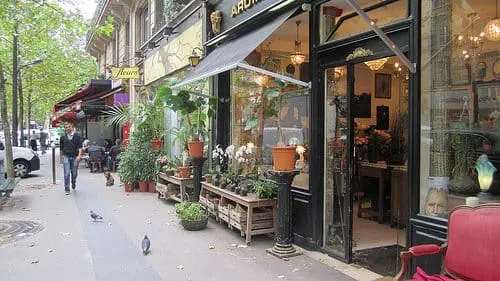Two startling statistics caught my eye today:
- 59% of consumers use Google every month to find local businesses. (BrightLocal, 10/24/2011)
- 60% of small-to-medium U.S. businesses do not have their phone number on the home page of their website. (BIA/Kelsey, 4/16/2012)
 These facts lead me to think that we need to go back to the basics on online marketing for local businesses.
These facts lead me to think that we need to go back to the basics on online marketing for local businesses.
- Make sure your phone number(s) are on every page, and near the top of your home page. You might want to consider putting your phone number in the footer as well. Make it easy for people to contact you.
- Have a real address, and list it on your website. This should go at the bottom of every page (in the footer) and on the Contact Us page. Google doesn’t think you run a “real” business if you don’t list an address.
- Define the goals of your website. You have to identify goals that you want to achieve for your site. The two broadest goals would be to explain what the website is about and where someone should go next. Other goals could be to get a 30% click-through rate on your landing pages or to triple your monthly website traffic.
- Understand who you’re writing for and why. Write down your business’ value proposition. The company’s most relevant and descriptive long tail keyword will be in that description. Optimize and write your home page around that keyword. Don’t put too much text on your home page, but provide several options for ways that your visitor could interact with you. For example, they could view a video, subscribe to your email newsletter, follow you on various social media platforms, download fequently asked questions and answers, etc. Keep a good amount of white space on your pages, and use headlines, links, and bulleted lists.
- Please don’t bore me with your “electronic brochure”. Talk about the benefits I get from you. Talk about the value I recieve. Talk to ME, don’t spend too much time talking about YOU. As a reader, I want to know, “What’s in it for me?” While you’re at it, deliver some of that value you are talking about. Educate me or entertain me. Provide content that is worth sharing.
- Optimize each page around one or two long tail keywords. Use your primary long tail keyword (which will vary by page) in your page title, meta description, headlines, content, and images. You really want to “brand” each page to a long tail keyword.
- Keep your menu system simple. No more than eight top-level menu headings, please. Now stand back five feet from your montior to see if you can still read the menu. Keep all menu links short and descriptive.
- Use “follow me” social media icons that link to your profile on each platform that you use. Additionally, provide a set of social media icons on each page that allows your reader to quickly promote your content to her friends, associates, and followers. Even if you’re only on Facebook, your readers may use other social media platforms, so include all the popular ones for sharing your content.
- Use calls to action. You have less than 5 seconds to grab the attention of people visiting your web page. Calls to action are critical. Tell them what you want them to do next, and give them a button to do it! Read my blog, follow me, subscribe, donate, pay now, download our latest report, participate in the survey, write a review. . . these are all examples of calls to action that you might want to use. Put calls to action on your home page and on every website page — including a call to action on the contact us page.
- Use your footer effectively. Not many people will see your footer, but you still need to have one. As mentioned above, your bsuiness address and phone could go in the footer. You should also have a copyright and maybe a call to action and some links to different areas of your website. All of these are good for your site visitors and for the search engines.
- Have an email address at your domain. While AOL was popular in the mid-90’s, you don’t look professional with an AOL address in 2012. Ditto for Yahoo, Live, Gmail, etc. Have a business email address at your domain, like bob@mydomain.com. And be sure this is the email address you use on all your social media accounts, on your local business listings, etc.
- Have a contact form on your Contact Us page. Did you know that a simple email link (like bob@domain.com) doesn’t work for most website visitors? Anyone who doesn’t use Outlook or another email software package that runs on their own computer (usually) can’t just click and email you. You need to use a contact form so that everyone can reach you.
If you have all the above items handled, be sure to read >>>>>” target=”_self”>Use Google+ for Local Search, as Google+ now plays a critical role in driving traffic to your local business. You really can’t afford to ignore this latest update from Google.





